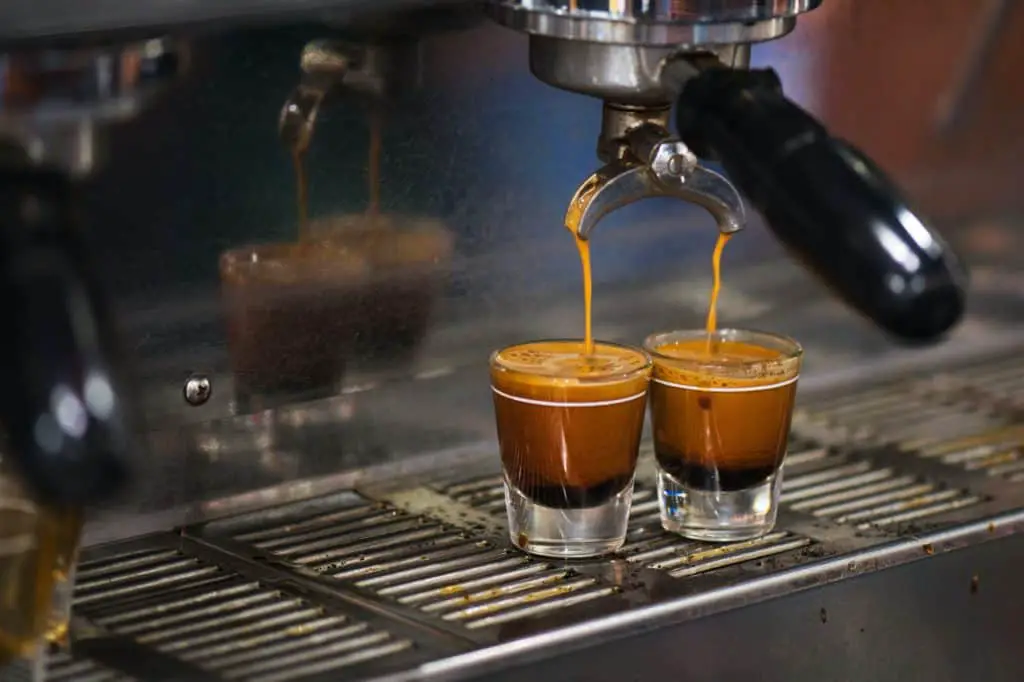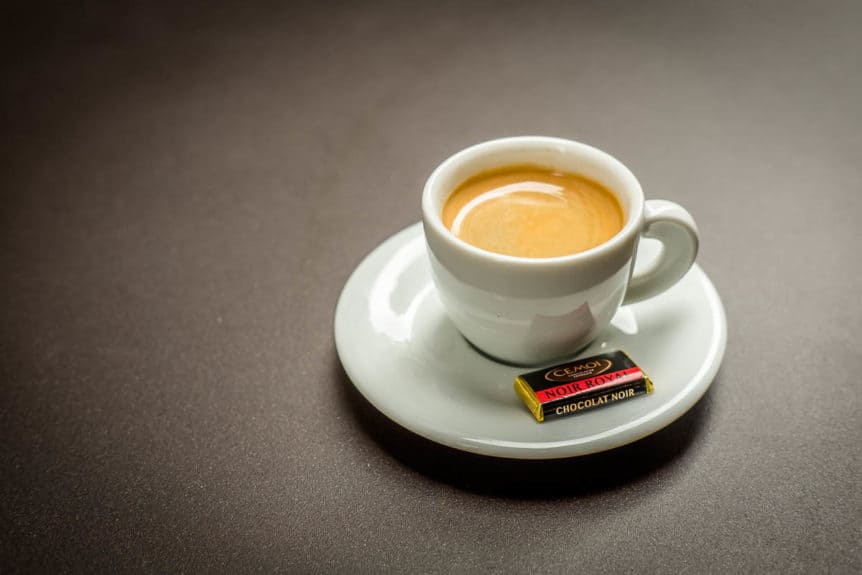
Espresso is more than a quick caffeine hit—it’s a bold, concentrated burst of flavor, defined by its thick, creamy texture and full-bodied taste. At the heart of every great espresso is the blend, a carefully crafted mix of coffee beans roasted and ground specifically for the high-pressure brewing process.
Typically combining Arabica and Robusta beans, espresso blends deliver diverse profiles, from nutty and chocolatey to bright and fruity. Whether you’re pulling shots at home or sipping in a café, understanding these blends unlocks a richer coffee experience.
Here’s a guide to what makes a stellar espresso blend, how they’re created, and examples to try, with a chart highlighting the flavor intensity of popular blends.
What Defines an Espresso Blend?
An espresso blend is a mix of beans from different origins, varieties, and roast levels, designed to balance flavor, body, and crema—the frothy layer atop a well-pulled shot. Arabica beans bring sweeter, fruitier notes, while Robusta adds earthy bitterness and boosts crema due to its higher oil content.
Most blends lean on Arabica for complexity (60-80%) with Robusta (20-40%) for structure, though some modern blends use only Arabica for a brighter taste. The beans are usually roasted medium to dark to enhance bold flavors, then ground finely for espresso machines, which force hot water through at 9 bars of pressure, extracting a 1-2 oz shot in 25-30 seconds.
Blending ensures consistency, smoothing out the variability of single-origin beans that might taste different harvest to harvest. Italian-style blends, for example, prioritize balance for reliable shots in busy cafes, while specialty roasters experiment with blends to highlight unique flavors. The chart below compares the flavor intensity of three blends, showing how bean choices shape the espresso’s character.
What Makes a Great Espresso Blend?
A great espresso blend is the heart of a perfect shot, turning a simple coffee into a bold, flavorful experience. It’s all about finding the right mix of beans, roast, and technique to create a balanced, full-bodied taste with that signature creamy crema.
From the origin of the beans to the grind size, every detail matters in crafting an espresso that’s nutty, chocolatey, or fruity—whatever suits your palate. Here’s what goes into making an espresso blend stand out, setting the stage for a stellar cup every time.
- Bean Origin and Variety: Beans from Brazil add chocolatey depth, while Ethiopian beans bring floral or fruity notes. Arabica offers sweetness; Robusta contributes bitterness and body. Specific regions, like Colombia’s high-altitude farms, add caramel or citrus nuances.
- Roast Level: Medium roasts balance sweetness and acidity, ideal for nuanced blends. Dark roasts deliver intense, smoky flavors, common in Italian blends, but risk masking origin notes if overdone.
- Bean Freshness: Beans roasted within 1-4 weeks yield the best flavor. Stale beans lose aroma and produce flat espresso.
- Grind Size: A fine, powdery grind ensures proper extraction. Too coarse, and the shot runs watery; too fine, and it clogs the machine.
- Water Quality: Pure, filtered water prevents mineral or chemical interference, letting the coffee’s flavors shine.
- Extraction Time: A 25-30 second pull optimizes flavor. Under-extraction tastes sour; over-extraction turns bitter.
These elements, combined with the barista’s skill, shape the espresso’s taste, making blending both art and science.
Crafting an Espresso Blend: Step-by-Step
Creating an espresso blend is like composing a symphony—each bean, roast, and ratio plays a part in the final flavor. This step-by-step process lets roasters and home brewers alike craft a custom mix that delivers the perfect shot, whether you crave a bold, chocolatey kick or a bright, fruity zing. From selecting beans to fine-tuning the grind, here’s how to build an espresso blend that brings out the best in every cup.
- Select the Beans: Choose beans for desired flavors. For a chocolatey blend, start with Brazil; for brightness, add Colombia or Ethiopia. Include Robusta for crema and body, or stick to Arabica for specialty blends.
- Set the Roast Level: Decide on medium (balanced, sweet) or dark (bold, smoky) based on the target profile. Roast each bean type separately to control flavor, as origins roast differently.
- Blend the Beans: Mix beans in specific ratios, like 60% Brazil, 20% Colombia, 20% Guatemala for a classic profile. Blend post-roasting for consistency, though some roasters blend pre-roasting for uniformity.
- Grind and Brew: Grind the blend finely and brew using an espresso machine, aiming for a 25-30 second extraction. Taste and adjust the blend or grind if needed.
Experimentation is key—roasters tweak ratios and roasts to perfect the flavor, often testing multiple batches.
Popular Espresso Blends and Their Flavors
Your examples showcase the diversity of espresso blends. The chart below illustrates the flavor intensity of three: Chocolate Blend (rich, bold), Bright Aromatic Blend (lively, balanced), and Classic Italian (robust, traditional).
- Typical Blend (60% Brazil, 20% Colombia, 20% Guatemala): Balanced, with caramel sweetness and mild fruitiness, ideal for everyday espresso.
- Easy Blend (60% Brazil, 40% Uganda): Earthy and robust, with chocolate and lemon-cookie notes, great for creamy shots.
- Chocolate Blend (60% Brazil, 20% Yemen, 20% Ethiopia): Rich, with dark chocolate, caramel, and berry undertones, perfect for bold palates.
- Heavy Blend (60% Brazil, 25% Ethiopia, 25% Sumatra): Full-bodied, with earthy, fruity, and smoky layers, suited for intense espresso.
- Bright Aromatic Blend (50% Colombia, 25% Guatemala, 25% Uganda): Lively, with citrus, caramel, and soft fruit, ideal for pour-over espresso.
- Wild Complex Blend (55% Brazil, 20% Ethiopia, 15% Indian Monsoon Malabar, 10% Uganda): Complex, with floral, earthy, and nutty notes, for adventurous drinkers.
- Italian Style Blend (35% Brazil, 35% Sumatra, 20% Ethiopia, 10% Guatemala): Robust, with chocolate, spice, and fruit, mimicking traditional Italian espresso.
- Mellow Blend (25% Guatemala, 25% Costa Rica, 25% Colombia, 25% Sumatra): Smooth, with balanced sweetness and earthy depth, great for lattes.
- Classic Italian (40% Brazil, 30% Sumatra, 20% Panama, 10% Costa Rica): Bold yet smooth, with chocolate, spice, and citrus, a café staple.
Roast Levels for Espresso
Medium to dark roasts are ideal for espresso. Medium roasts offer balanced sweetness and acidity, letting origin flavors shine, while dark roasts deliver fuller body and slight bitterness, common in Italian blends. Over-roasting risks burnt notes, so roasters aim for precision. The best roast depends on your taste and the blend—brighter blends suit medium roasts, while robust ones pair with dark.
Is Espresso Stronger Than Regular Coffee?
Espresso’s concentrated flavor feels stronger than drip coffee, but caffeine content is similar. A 1-2 oz espresso shot has 60-100 mg of caffeine, while an 8 oz drip coffee has 80-120 mg. Espresso’s intensity comes from its brewing method—high pressure extracts oils and flavors quickly, creating a bold taste and thick crema. Robusta-heavy blends may increase caffeine, but brewing variables like grind size and extraction time also matter. Ultimately, espresso’s “strength” is more about flavor than caffeine.
Modern Trends and Regional Preferences
In Italy, blends prioritize consistency for quick, balanced shots in bustling cafes, often heavy on Brazil and Sumatra. American roasters lean toward brighter, fruitier blends, sometimes using single-origin beans for espresso to highlight unique origins like Ethiopia or Colombia.
Spanish and Latin American espresso blends, influenced by local tastes, may incorporate Central American beans for sweetness or Robusta for punch. The rise of specialty coffee has spurred experimentation, with roasters crafting seasonal or micro-lot blends to showcase rare beans.
Tips for Your Own Blend
Start with a base like Brazilian beans for body, then add beans like Ethiopian for fruitiness or Sumatran for earthiness. Roast small batches to test medium versus dark profiles, and grind just before brewing to preserve freshness. Use filtered water and clean your espresso machine regularly to avoid off-flavors. Taste-test shots, tweaking ratios until you hit your ideal flavor—whether it’s nutty, bright, or bold.
Why Blends Matter
Espresso blends are the backbone of a great shot, balancing complexity and consistency. From the chocolatey depth of a Brazil-heavy mix to the vibrant acidity of a Colombian blend, each offers a unique experience. With the right beans, roast, and technique, you can craft espresso that rivals your favorite café. Next time you pull a shot, consider the blend’s origins and artistry—it’s what makes every shot a masterpiece.

